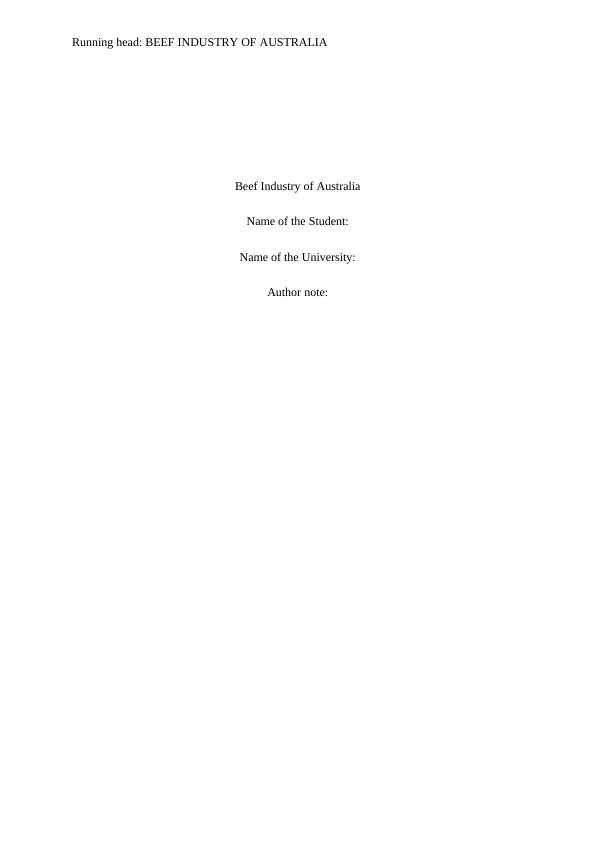Beef Industry of Australia
Analyzing the current economic prospects of a chosen sector, describing its structure, innovation, and knowledge base, identifying system failures, and proposing policy options to address a selected weakness.
14 Pages4153 Words87 Views
Added on 2023-01-23
About This Document
This article provides an analysis of the beef industry in Australia, including its current economic prospects, opportunities for future innovation, and system weaknesses. It discusses the firms, knowledge base, and institutions involved in the industry.
Beef Industry of Australia
Analyzing the current economic prospects of a chosen sector, describing its structure, innovation, and knowledge base, identifying system failures, and proposing policy options to address a selected weakness.
Added on 2023-01-23
ShareRelated Documents
End of preview
Want to access all the pages? Upload your documents or become a member.
(Doc) International Marketing Management
|10
|2437
|37
Mapping the Beef Product Supply Chain
|12
|1874
|322
International Marketing: Company Overview, Consumer Profile, STP and Marketing Mix Strategy
|8
|1969
|94
MEAT INDUSTRY IN AUSTRALIA
|9
|1680
|123
Meat and Livestock in Australia
|14
|3689
|2
Essay on Greenhouse Effect
|8
|1815
|132




